

others
Euro could attempt some consolidation ahead of further gains – Crypto News
- Euro keeps the narrow trading range in multi-week tops.
- Stocks markets in Europe maintain the optimism post-ECB.
- The appetite for the risk complex remains favored on Friday.
- ECB’s J. Nagel and B. Vasle advocated for an extra hike in the summer.
- The EMU Final Inflation Rate matched the preliminary readings.
- US Flash Consumer Sentiment and Fedspeak comes later in the session.
The European currency (EUR) keeps its narrow trading range in the area of 5-week highs vs. the Greenback on Friday. A potential move to the psychological 1.1000 hurdle appears, so far, elusive for EUR/USD,
In the meantime, risk appetite Trends appear somewhat divided as investors continue to adjust to Thursday’s hawkish message from the ECB, after the central bank walked the talk and raised rates by 25 bps and signaled that more is coming at the July meeting.
On the latter, ECB Board members Joachim Nagel and Bostjan Vasle advocated earlier in the European morning for an extra 25 bps rate hike in the summer, a view that falls in line with President Christine Lagarde’s comments on Thursday.
Back at the ECB event, the bank’s rate increases were underscored during the press conference, where President Lagarde devoted a significant amount of time emphasizing factors that contribute to inflation growth, such as robust wage increases, improved profit margins, and high expectations of inflation. Although potential risks to economic growth and stricter financial conditions were acknowledged, the primary message conveyed by the ECB today was its commitment to maintain the upward trajectory of interest rates. As Lagarde mentioned, the ECB has no intention of considering a pause at the moment.
The domestic calendar confirmed that disinflationary pressures remained well in place in the euro area in May, despite inflation remaining far from the ECB’s target. On this basis, the headline CPI rose at an annualized 6.1% during the last month and 5.3% when it comes to core prices (excluding costs for energy and food).
Across the Atlantic, the advanced Michigan Consumer Sentiment gauge will be the salient release across the pond, along with speeches by St. Louise fed James Bullard (2025 voter, hawk) and FOMC’s Christopher Waller (permanent voter, hawk).
Daily digest market movers: Euro now sets its sights on the 1.1000 barrier
- The US Dollar attempts a tepid bounce and encourages the USD Index (DXY) to put some distance from earlier multi-week lows near 102.00.
- US and German yields lose some momentum, although their inversions keep signaling the likelihood of a recession in the coming months.
- It seems that a continuous decrease in the Greenback is not certain after the FOMC event on Wednesday, as the Committee plans to resume increasing interest rates, potentially starting as early as July and Jerome Powell clarified that the decision not to increase rates at the current meeting was not a “skip”.
- EMU Final inflation figures coincided with the flash prints in May.
- Consensus expects a slight improvement in US Consumer Sentiment in June, while the resumption of the hawkish narrative should not be ruled out when C. Waller speaks later in the session.
Technical Analysis: Euro faces a key hurdle at 1.1000
Euro (EUR) printed a new monthly high at 1.0962 on June 16. Further gains need to rapidly clear this level to allow for a potential move to the psychological 1.1000 hurdle. North from here, the pair could challenge the 2023 high at 1.1095 (April 26), which is closely followed by the round level of 1.1100 and comes ahead of the weekly top of 1.1184 (March 31, 2022). In addition, the latter appears propped up by the proximity of the 200-week SMA, today at 1.1182.
In case bears regain the initiative, there are no contention levels of significance until the May low of 1.0635 (May 31). The breach of this level could sponsor a deeper decline to the March low of 1.0516 (March 15) seconded by the 2023 low at 1.0481 (January 6).
ECB FAQs
What is the ECB and how does it influence the Euro?
The European Central Bank (ECB) in Frankfurt, Germany, is the reserve bank for the Eurozone. The ECB sets interest rates and manages monetary policy for the region.
The ECB’s primary mandate is to maintain price stability, which means keeping inflation at around 2%. Its primary tool for achieving this is by raising or lowering interest rates. Relatively high interest rates will usually result in a stronger Euro and vice versa.
The ECB Governing Council makes monetary policy decisions at meetings held eight times a year. Decisions are made by heads of the Eurozone national banks and six permanent members, including the President of the ECB, Christine Lagarde.
What is Quantitative Easing (QE) and how does it affect the Euro?
In extreme situations, the European Central Bank can enact a policy tool called Quantitative Easing. QE is the process by which the ECB prints Euros and uses them to buy assets – usually government or corporate bonds – from banks and other financial institutions. QE usually results in a weaker Euro.
QE is a last resort when simply lowering interest rates is unlikely to achieve the objective of price stability. The ECB used it during the Great Financial Crisis in 2009-11, in 2015 when inflation remained stubbornly low, as well as during the covid pandemic.
What is Quantitative Tightening (QT) and how does it affect the Euro?
Quantitative tightening (QT) is the reverse of QE. It is undertaken after QE when an economic recovery is underway and inflation starts rising. Whilst in QE the European Central Bank (ECB) purchases government and corporate bonds from financial institutions to provide them with liquidity, in QT the ECB stops buying more bonds, and stops reinvesting the principal maturing on the bonds it already holds. It is usually positive (or bullish) for the Euro.
-
![DIS Elliott Wave technical analysis [Video]](https://dripp.zone/news/wp-content/uploads/2025/06/DIS-Elliott-Wave-technical-analysis-Video-Crypto-News-400x240.jpg)
![DIS Elliott Wave technical analysis [Video]](https://dripp.zone/news/wp-content/uploads/2025/06/DIS-Elliott-Wave-technical-analysis-Video-Crypto-News-80x80.jpg) others1 week ago
others1 week agoSkies are clearing for Delta as stock soars 13% on earnings beat – Crypto News
-
![DIS Elliott Wave technical analysis [Video]](https://dripp.zone/news/wp-content/uploads/2025/06/DIS-Elliott-Wave-technical-analysis-Video-Crypto-News-400x240.jpg)
![DIS Elliott Wave technical analysis [Video]](https://dripp.zone/news/wp-content/uploads/2025/06/DIS-Elliott-Wave-technical-analysis-Video-Crypto-News-80x80.jpg) others1 week ago
others1 week agoSkies are clearing for Delta as stock soars 13% on earnings beat – Crypto News
-

 Blockchain1 week ago
Blockchain1 week agoInsomnia Labs Debuts Stablecoin Credit Platform for Creators – Crypto News
-

 Blockchain1 week ago
Blockchain1 week agoAnt Group Eyes USDC Integration Circle’s: Report – Crypto News
-

 Cryptocurrency5 days ago
Cryptocurrency5 days agoWhale Sells $407K TRUMP, Loses $1.37M in Exit – Crypto News
-

 others1 week ago
others1 week agoUSD/CAD trades with positive bias below 1.3700; looks to FOMC minutes for fresh impetus – Crypto News
-

 Blockchain1 week ago
Blockchain1 week agoBinance Founder Backs BNB Treasury Company Aiming For US IPO – Crypto News
-
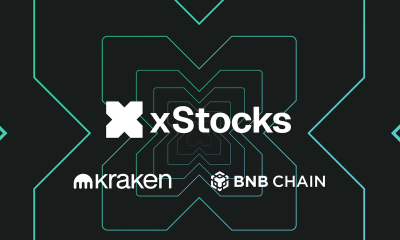
 Blockchain1 week ago
Blockchain1 week agoKraken and Backed Expand Tokenized Equities to BNB Chain – Crypto News
-
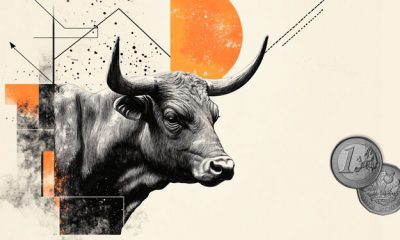
 others1 week ago
others1 week agoEUR/GBP posts modest gain above 0.8600 ahead of German inflation data – Crypto News
-

 Metaverse1 week ago
Metaverse1 week agoHow Brands Can Deepen Customer Connections in the Metaverse – Crypto News
-
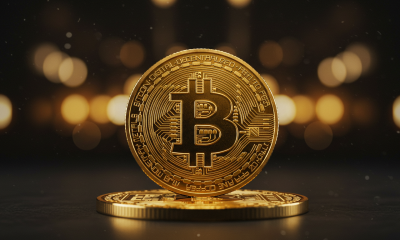
 Cryptocurrency1 week ago
Cryptocurrency1 week agoBitcoin Breaks New Record at $111K, What’s Fueling the $120K Price Target? – Crypto News
-
Technology1 week ago
XRP Eyes $3 Breakout Amid Rising BlackRock ETF Speculation – Crypto News
-
Technology1 week ago
Breaking: SharpLink Purchases 10,000 ETH from Ethereum Foundation, SBET Stock Up 7% – Crypto News
-

 others1 week ago
others1 week agoEUR/GBP climbs as weak UK data fuels BoE rate cut speculation – Crypto News
-
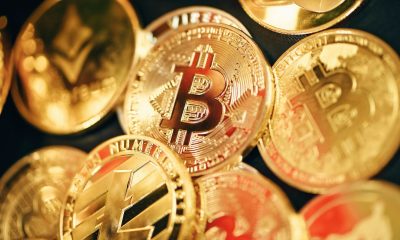
 Blockchain1 week ago
Blockchain1 week agoBitcoin Hits All-Time High as Crypto Legislation Votes Near – Crypto News
-
Business1 week ago
PENGU Rallies Over 20% Amid Coinbase’s Pudgy Penguins PFP Frenzy – Crypto News
-

 Blockchain6 days ago
Blockchain6 days agoRobinhood Dealing With Fallout of Tokenized Equities Offering – Crypto News
-

 Blockchain1 week ago
Blockchain1 week agoEthereum Bulls Roar — $3K Beckons After 5% Spike – Crypto News
-

 Blockchain1 week ago
Blockchain1 week agoAustralia Banks Join Digital Currency Trial for Tokenized Assets – Crypto News
-
Business1 week ago
Did Ripple Really Win XRP Lawsuit Despite $125M Fine? Lawyer Fires Back at CEO – Crypto News
-

 Cryptocurrency1 week ago
Cryptocurrency1 week agoXRP price forecast as coins surges 2.19% to $2.33 – Crypto News
-

 Technology1 week ago
Technology1 week agoPerplexity launches Comet, an AI-powered browser to challenge Google Chrome; OpenAI expected to enter the space soon – Crypto News
-

 Blockchain1 week ago
Blockchain1 week agoSUI Chart Pattern Confirmation Sets $3.89 Price Target – Crypto News
-
others1 week ago
Trump Jr. Backed Thumzup Media To Invest In ETH, XRP, SOL, DOGE And LTC – Crypto News
-
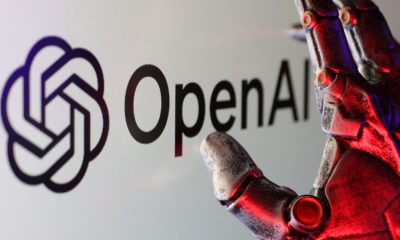
 Technology1 week ago
Technology1 week agoGoogle’s worst nightmare? OpenAI’s new AI web browser is coming soon to challenge Chrome – Crypto News
-
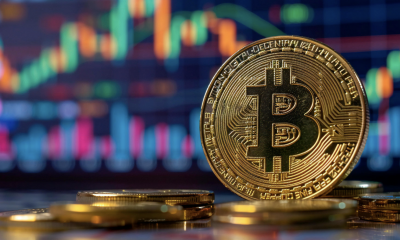
 Cryptocurrency1 week ago
Cryptocurrency1 week agoBitcoin Hits Record Peak. How High Can It Surge in 2025? – Crypto News
-
Technology1 week ago
VC Firm Ego Death Capital Closes $100M Funding to Back Bitcoin-Based Projects – Crypto News
-
Cryptocurrency1 week ago
Tokenized Securities Are Still Securities, US SEC Warns Robinhood, Kraken – Crypto News
-

 others1 week ago
others1 week agoNovaEx Launches with a Security-First Crypto Trading Platform Offering Deep Liquidity and Institutional-Grade Infrastructure – Crypto News
-

 others1 week ago
others1 week agoAnthony Scaramucci Says $180,000 Bitcoin Price Explosion Possible As BTC ‘Supremacy’ Creeps Up – Here’s His Timeline – Crypto News
-

 Cryptocurrency1 week ago
Cryptocurrency1 week agoBitcoin Breaks New Record at $111K, What’s Fueling the $120K Price Target? – Crypto News
-
Business1 week ago
US Senate To Release CLARITY Act Draft Next Week – Crypto News
-

 others1 week ago
others1 week ago$687,220,000 in Bitcoin Shorts Liquidated in Just One Hour As BTC Explodes To $116,000 – Crypto News
-

 Business1 week ago
Business1 week agoS&P Global Downgrades Saks Global’s Credit Rating – Crypto News
-

 Cryptocurrency5 days ago
Cryptocurrency5 days agoSatoshi-Era Bitcoin Whale Moves Another $2.42 Billion, What’s Happening? – Crypto News
-

 Technology1 week ago
Technology1 week ago10 Smartchoice tablets from top brands, curated for everyday use, up to 45% off before Amazon Prime Day Sale – Crypto News
-
others1 week ago
China’s Ant Group With 1.4B Users Taps Circle to Integrate USDC – Crypto News
-

 De-fi1 week ago
De-fi1 week agoOusted Movement Labs Co-Founder Sues Startup in Delaware Court – Crypto News
-

 Blockchain1 week ago
Blockchain1 week agoSei Network Unlocks Japan Market After Hitting $626M in TVL – Crypto News
-
Business1 week ago
Breaking: US SEC Delays Grayscale Avalanche ETF Launch – Crypto News
-
Business1 week ago
XRP Set for Big Week as ProShares ETF Launches July 18 – Crypto News
-
Technology1 week ago
Hyperliquid Hits Record $10.6B OI As HYPE Price Records New ATH – Crypto News
-

 Blockchain6 days ago
Blockchain6 days agoZiglu Faces $2.7M Shortfall as Crypto Fintech Enters Special Administration – Crypto News
-
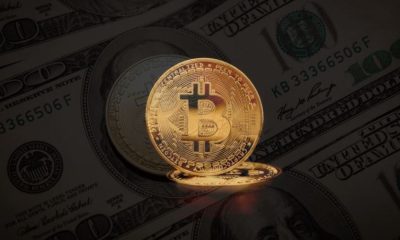
 Cryptocurrency5 days ago
Cryptocurrency5 days agoBitcoin Breaches $120K, Institutional FOMO Takes and House Debate Propel Gains – Crypto News
-
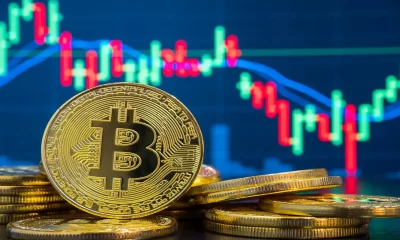
 Cryptocurrency1 week ago
Cryptocurrency1 week agoBitcoin Price Hits New Record Highs, Target Moves to $120K – Crypto News
-

 others1 week ago
others1 week agoJapanese Yen recovers few pips from two-week low against USD; not out of the woods yet – Crypto News
-

 De-fi1 week ago
De-fi1 week agoLarge-Cap Cryptos Climb as Trump’s Tariff Threats Stir Market Uncertainty – Crypto News
-
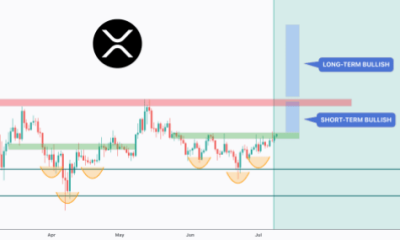
 Blockchain1 week ago
Blockchain1 week agoXRP Forms Inverse Head And Shoulders Pattern, Why A Surge To $3.3 Is Possible – Crypto News
-

 Blockchain1 week ago
Blockchain1 week agoBlockchain Can Aid Action Against Criminals – Crypto News
-
Business1 week ago
Reserve Bank of Australia Advances Project Acacia To Test CBDCs, Stablecoins – Crypto News



![The Endgame for fiat currencies [Video]](https://dripp.zone/news/wp-content/uploads/2025/07/The-Endgame-for-fiat-currencies-Video-Crypto-News-400x240.jpg)
![The Endgame for fiat currencies [Video]](https://dripp.zone/news/wp-content/uploads/2025/07/The-Endgame-for-fiat-currencies-Video-Crypto-News-80x80.jpg)






![Spotify (SPOT) Elliott Wave analysis [Video]](https://dripp.zone/news/wp-content/uploads/2025/07/Spotify-SPOT-Elliott-Wave-analysis-Video-Crypto-News-400x240.jpg)
![Spotify (SPOT) Elliott Wave analysis [Video]](https://dripp.zone/news/wp-content/uploads/2025/07/Spotify-SPOT-Elliott-Wave-analysis-Video-Crypto-News-80x80.jpg)